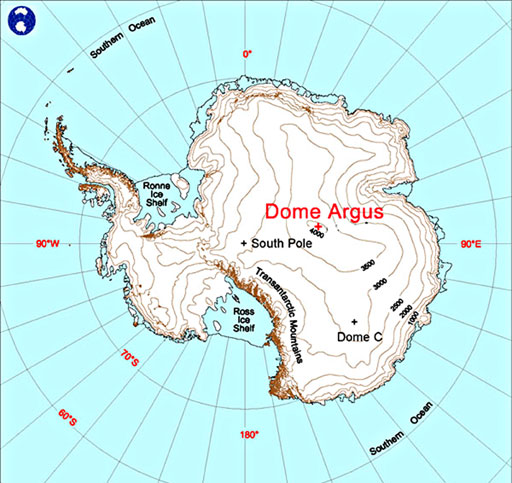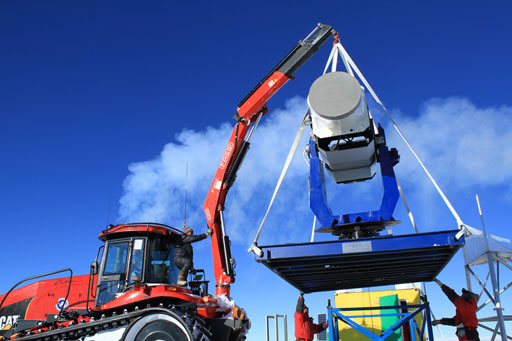Fassi loader crane unloads Chinese telescope
 A FASSI CRANE "F155A.0.22 ACTIVE" MODEL POSE THE FIRST CHINESE TELESCOPE AST3-1 IN ANTARCTICA THAT IT WILL FORM THE CHINESE GIANT SOLAR TELESCOPE (CGST)
A FASSI CRANE "F155A.0.22 ACTIVE" MODEL POSE THE FIRST CHINESE TELESCOPE AST3-1 IN ANTARCTICA THAT IT WILL FORM THE CHINESE GIANT SOLAR TELESCOPE (CGST)
The efficiency of the Fassi cranes in difficult weather conditions is always an essential component to assess their technological quality. But when these conditions become extreme, almost “impossible”, the climate is transformed into a veritable open-air laboratory for testing the reliability of machines and systems developed by the Italian manufacturer.
The involved cranes in the polar mission of the Republic of China at the base of Kunlun, are a "F110AC.0.22 active" and a "F155AC.0.22 active" installed on the back of two tractors. These vehicles were provided by William Adams Pty Ltd, Caterpillar dealer for the Australian states of Victoria and Tasmania, a company specialised in the provision of tractors and machinery for worksite activities in polar conditions. The Fassi cranes were provided to Williams Adams, by “600 Cranes Australasia Pty Ltd”, Fassi dealer for Australia, New Zealand and the Pacific Islands. William Adams is based in Hobart, Tasmania, and serves international customers operating in Antarctica, mainly for the construction of scientific stations.
Dome Argus, the highest point on the Antarctic Plateau, is now home to a robotic half-meter-long telescope called AST3-1, one of three planned for the Plateau Observatory or Plato-A. The combination of three telescopes will give astronomers the ability to hunt for planets about the size of Earth around other stars, find supernovaes useful for cosmological studies and other future discoveries in astrophysics.
 The AST3-1 has a charge-coupled device (CCD) camera of 110 megapixels – an unprecedented size for a single-piece detector. Professor Michael Ashley, head of the University of New South Wales team responsible for PLATO-A, said: “This is an astounding achievement. A stand-alone telescope in the pristine environment of Antarctica can conduct scientific research that would otherwise only be possible from space, but at a few percent of the cost.”
The AST3-1 has a charge-coupled device (CCD) camera of 110 megapixels – an unprecedented size for a single-piece detector. Professor Michael Ashley, head of the University of New South Wales team responsible for PLATO-A, said: “This is an astounding achievement. A stand-alone telescope in the pristine environment of Antarctica can conduct scientific research that would otherwise only be possible from space, but at a few percent of the cost.”
The observatory is completely autonomous, and has a computer on-site to analyze the vast amounts of data provided by the telescopes and pick up transient events such as supernovae and gamma ray bursts. A joint effort between the National Astronomical Observatories of the Chinese Academy of Sciences (NAOC), the Polar Research Institute of China (PRIC), and the Australian University of New South Wales (UNSW). The telescopes must withstand the most difficult environment on earth. Prof. Xiangqun Cui of the Nanjing Institute of Astronomical Optics Technology (NIAOT) describes the challenges: “The winter temperature can be as low as minus 80 degrees Celsius, and the air pressure is barely half that of sea level. It has to be able to prevent ice from building up on mirror surfaces and the telescope support structure.” The team members say data collected thus far from PLATO-A confirms that Dome Argus, with its cold temperature, incredibly dry air and stable atmosphere, is likely the best site for establishing future ground-based astronomical observatories.

